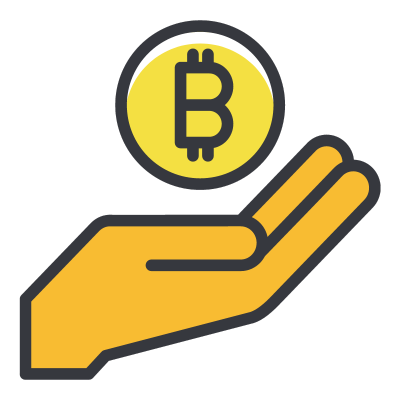Introduction
Decentralized Finance (DeFi) continues to evolve, reshaping the global financial system with innovative solutions to eliminate intermediaries and enhance financial accessibility. By 2025, DeFi is expected to revolutionize lending, staking, tokenization, and security, thereby offering more efficient and transparent financial ecosystems.
This blog explores the top five DeFi trends to watch by 2025, highlighting how these advancements will shape the future of decentralized finance.

1. Real-World Asset (RWA) Tokenization
Tokenization of real-world assets (RWA) is one of the most anticipated DeFi trends in 2025. DeFi platforms move beyond crypto-based assets and incorporate tangible assets, such as real estate, stocks, bonds, and commodities, into blockchain networks.
A recent Binance Research report revealed that the market value of on-chain real-world assets (RWAs) has surpassed $12 billion. In 2022, Boston Consulting Group (BCG) predicted that the tokenized asset market could soar to an astounding $16 trillion by 2030. Over the past few months, RWA tokens have been steadily gaining momentum, signaling a significant shift in market sentiment.
Real-world asset (RWA) tokenization is a groundbreaking application of blockchain technology that is still in its early stages, but its potential is immense.
Why It Matters?
1. Increased Liquidity:
Investors can trade fractional ownership of real-world assets, making high-value investments more accessible.
2. Transparency and security:-
Blockchain ensures immutable records reducing fraud and enhancing trust.
3. 24/7 Trading:
Unlike traditional finance, tokenized assets can be traded anytime for decentralized exchanges.
4. Examples & Adoption:
a) Platforms like Ondo Finance and Maple Finance pioneering RWA tokenization.
b) Large institutions are experimenting with tokenized government bonds and real estate on blockchain networks.
As RWA tokenization gains traction, partnering with a blockchain development company can help businesses leverage blockchain solutions for secure and efficient asset tokenization.
2. Cross-Chain Interoperability in DeFi
The cryptocurrency and blockchain industry is highly fragmented, with numerous active blockchains, each having its own rules, features, and communities. This fragmentation can hinder the growth and adoption of blockchain technology by creating barriers to entry for both users and developers.
As multiple blockchain networks power DeFi applications, cross-chain interoperability has become essential. By 2025, seamless asset transfers between blockchains will enhance efficiency and usability, allowing DeFi users to move assets without limitations.
Why It Matters?
1. Unified DeFi Ecosystem:
Users can access multiple DeFi applications across different blockchains without any restrictions.
2. Lower Transaction Fees:
Cross-chain bridges enable cheaper transactions, avoiding congestion on expensive blockchains, such as Ethereum.
3. Improved Security:
Advanced interoperability solutions can minimize the risks associated with cross-chain hacks.
4. Examples & Adoption:
a) Polkadot and Cosmos are leading interoperability projects that enable blockchain communication.
b) LayerZero and Chainlink CCIP provide seamless cross-chain liquidity transfers.
3. The Rise of AI-Powered DeFi Platforms
Artificial Intelligence (AI) transforms DeFi by enhancing automation, security, and risk management. By 2025, AI-powered DeFi platforms will offer advanced trading strategies, fraud detection, and yield optimization.
The future of DeFi is bright, and AI agents are poised to play a pivotal role. With their ability to learn, adapt, and operate seamlessly across different blockchains, they are set to revolutionize how we interact with decentralized finance.
At SDLC Corp, we’re committed to fostering innovation and empowering both developers and users. By integrating AI agents into the Builder Marketplace, we’re creating a more intelligent, efficient, and accessible DeFi ecosystem for everyone.
Why It Matters?
1. Automated Smart Contracts:-
AI can optimize Defi lending, staking, and liquidity pools thereby reducing human intervention.
2. Risk Management:-
AI models analyze market volatility and user behavior to prevent security breaches and liquidation risks.
3. Personalized Financial Services:-
AI-based DeFi platforms offer customized yield farming and lending opportunities.
4. Examples & Adoption:
a) SingularityDAO used AI to automate portfolio management in DeFi.
b) Fetch.ai integrated machine learning with decentralized financial applications.
4. Institutional Adoption of DeFi
By 2025, traditional financial institutions and regulatory bodies are expected to engage with DeFi on an unprecedented scale. Banks, hedge funds, and investment firms have integrated blockchain-based financial products.
Institutional DeFi is when traditional financial institutions (TradFi) use blockchain technology and decentralized financial services (DeFi). This shift is driven by the increasing demand for digital assets from retail clients, mutual funds, and family offices.
Why It Matters?
1. Mass Adoption:
Institutional capital brings credibility and liquidity to the DeFi markets.
2. Regulatory Compliance:
More DeFi projects will follow regulated frameworks, ensuring compliant decentralized lending, trading, and staking.
3. Defi-Banking Integration:-
Expect hybrid financial products that merge DeFi’s efficiency with traditional banking security.
4. Examples & Adoption:
a) JPMorgan, Goldman Sachs, and BlackRock are actively exploring Defi yield farming and lending services.
b) The European Central Bank (ECB) and U.S. regulators are drafting guidelines for regulated DeFi applications.
5. The Evolution of DeFi Insurance & Security Protocols
DeFi (Decentralized Finance) insurance and security protocols are evolving to provide users with more coverage options and protection. These protocols are built on blockchain networks and use smart contracts to allow users to perform financial transactions without a bank.
Because DeFi protocols handle billions of dollars in transactions, security and insurance mechanisms are evolving to protect user funds. In 2025, DeFi insurance will be a core feature of lending platforms, DEXs, and stacking services.
Why It Matters?
1. Protection Against Smart Contract Exploits:-
Defi insurance covers hacks, liquidity pool failures, and flash loan attacks.
2. Greater Investor Confidence:-
Institutional and retail investors feel that investing in DeFi projects with insurance backing is safer.
3. More Robust Security Solutions:-
AI-driven threat detection and automated security auditing reduce vulnerabilities.
4. Examples & Adoption:
a) Nexus Mutual and InsurAce offer Defi insurance against protocol failures.
b) CertiK and OpenZeppelin provide smart contract audits and security frameworks to prevent DeFi hacks.
Start Your Centralized Exchange Today!

Conclusion
Decentralized Finance (DeFi) is reshaping the global financial landscape by offering more transparency, security, and efficiency. In 2025, key trends, such as real-world asset tokenization, cross-chain interoperability, AI-powered platforms, institutional adoption, and DeFi insurance, will drive the industry’s evolution.
As DeFi adoption grows, staying ahead of these trends will be crucial for investors, developers, and businesses looking to capitalize on the future of decentralized finance. Partnering with a leading blockchain development company can help businesses navigate this rapidly evolving space and build cutting-edge DeFi solutions.
FAQ'S
What are the key DeFi trends expected in 2025?
The major trends include real-world asset tokenization, cross-chain interoperability, AI-powered platforms, institutional adoption, and DeFi insurance.
How will real-world asset tokenization impact DeFi?
It will enable fractional ownership of physical assets like real estate and commodities, increasing liquidity and accessibility in decentralized markets.
Why is cross-chain interoperability important for DeFi?
It allows seamless asset transfers and interactions between different blockchain networks, enhancing efficiency and reducing fragmentation in the ecosystem.
What role will AI play in the evolution of DeFi?
AI-powered platforms will improve trading strategies, risk management, and automated decision-making, making DeFi more efficient and secure.
Will institutional adoption accelerate DeFi growth in 2025?
Yes, more financial institutions are integrating DeFi solutions, bringing increased liquidity, credibility, and mainstream acceptance to the industry.















